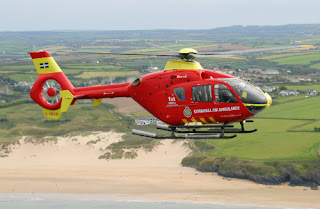Air Ambulance provision in Northern Ireland
The death of Dr John Hinds in a
motorcycle accident was a tragedy for his family, the motorcycling fraternity
and indeed the wider community through the loss of a talented medical
practitioner.
His passing has led to renewed
calls for the introduction of an air ambulance to Northern Ireland, a cause he
had championed for some time.
It is a cause which in the right
circumstances will provide additional benefit to the delivery of pre-hospital
emergency care in Northern Ireland. Unfortunately at this time those
circumstances do not yet exist.
Amongst the circumstances
required is the need for a sustainable ambulance service capable of meeting the
existing requirements in terms of service delivery. The Northern Ireland
Ambulance Service requires additional funding and resources in order to meet
these requirements.
In a response to Kathleen Torney
of The Detail published on 26
June 2014 NIAS Chief Executive Liam McIvor highlighted some of the
difficulties facing the service.
“We continue
to highlight the financial constraints within which we operate – we spend less
than ten pence per person per day on our ambulance service in Northern Ireland.
Investment in ambulance services in N Ireland is less than £35 per person,
which is one of the lowest in the UK.
While this
clearly does not reflect the value which the Northern Ireland community place
on their ambulance service, it is one indication of the priority placed on our
collective health and well-being.
As we move
deeper into a difficult financial environment, we will have even more cause to
consider the value we place on our ambulance service and the investment we wish
to make in pre-hospital care.
The speed of
response is a key measure of performance for any organisation, particularly so
for an emergency ambulance service and we acknowledge our inability to maintain
the performance achieved in 2011/12. We are getting to more patients more
quickly than ever before, but increasing demand for emergency response has
impacted heavily on our capacity to respond promptly.”
Investing in the services detailed
above will enhance the survival and recovery of patients and allow a real
assessment of the value of aeromedical support on a full time basis.
Of course the purpose of using an
air ambulance is to ensure access to treatment quicker, from the qualification
of the medical staff on board, the limitations of what they can do through
emergency care and the delivery of the patient to a facility geared to the
immediate treatment of the casualty.
This will require the radical
reform of acute services across Northern Ireland at least in line with the
Donaldson report to ensure that the system is best able to maximise the
benefits of the introduction of an air ambulance.
The decision of the Irish
Government to introduce a permanent air ambulance service creates a strategic
opportunity to deliver such a service on an all island basis. Clearly geography
dictates that Donegal will be closer to any air ambulance based in Northern
Ireland and probably closer to an acute hospital in Northern Ireland capable of
treating the patient. Flexibility will enhance service delivery north and
south.
The challenge for politicians now
is not just to sign a petition, or promote the cause but rather to champion the
enhanced role of the Northern Ireland Ambulance Service and the reform of the
acute sector which will create the circumstances whereby an air ambulance can
truly make a difference.

Comments
Post a Comment